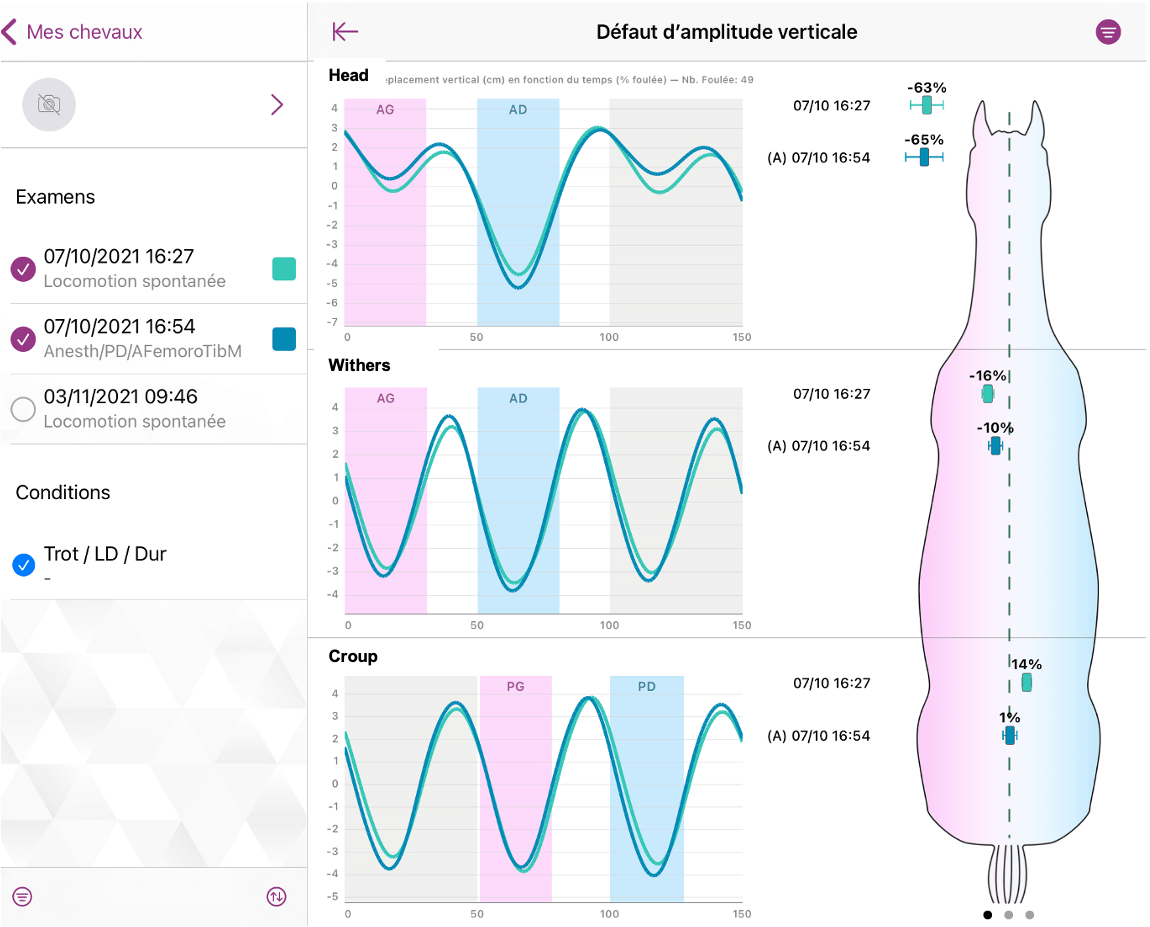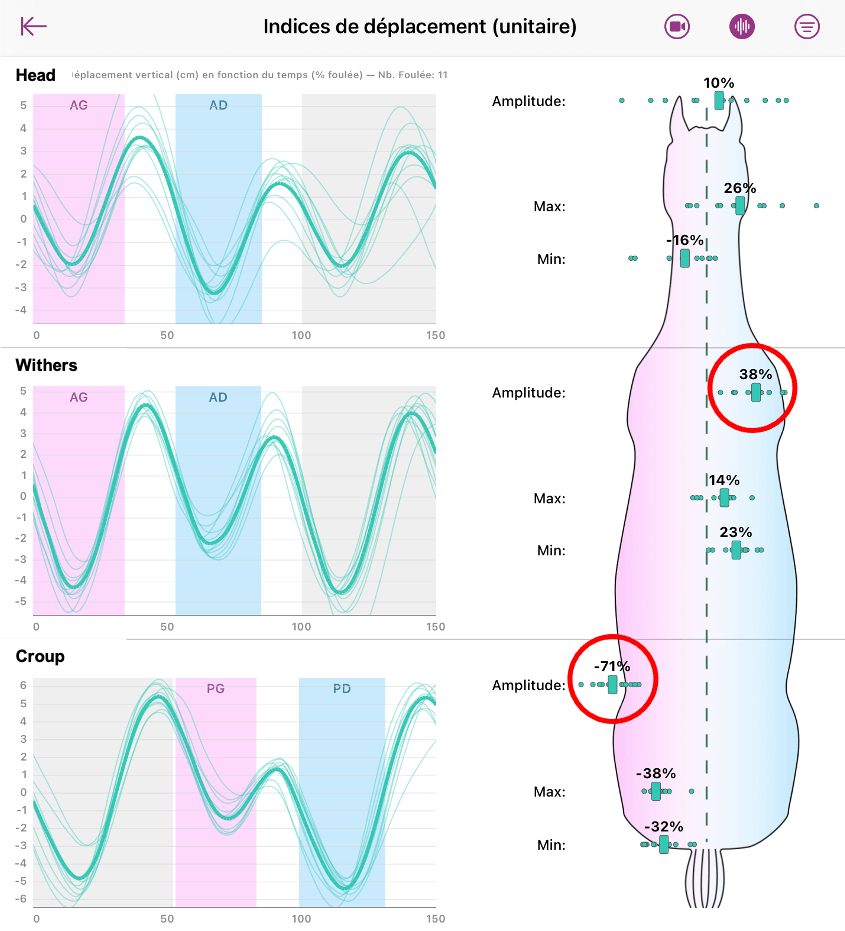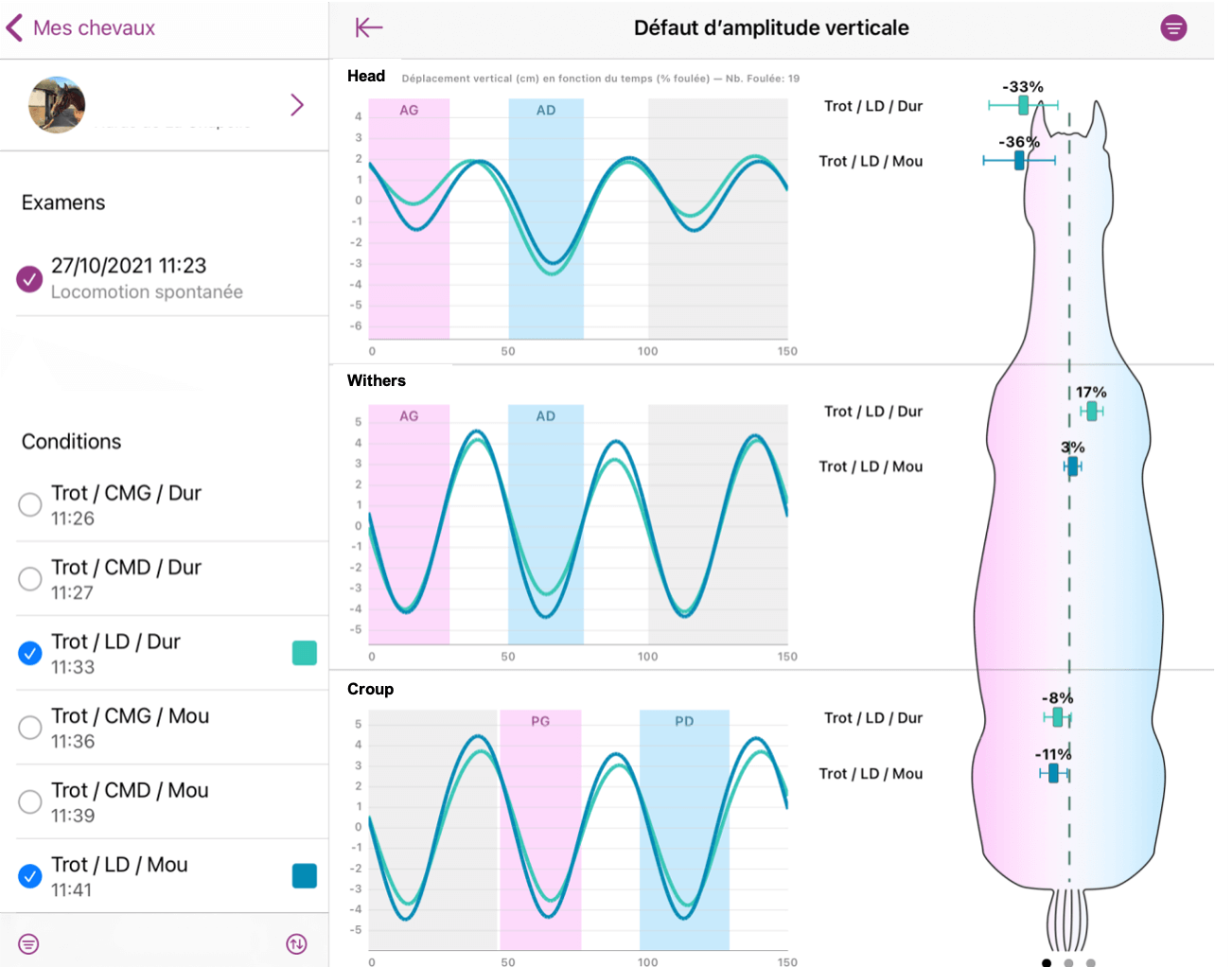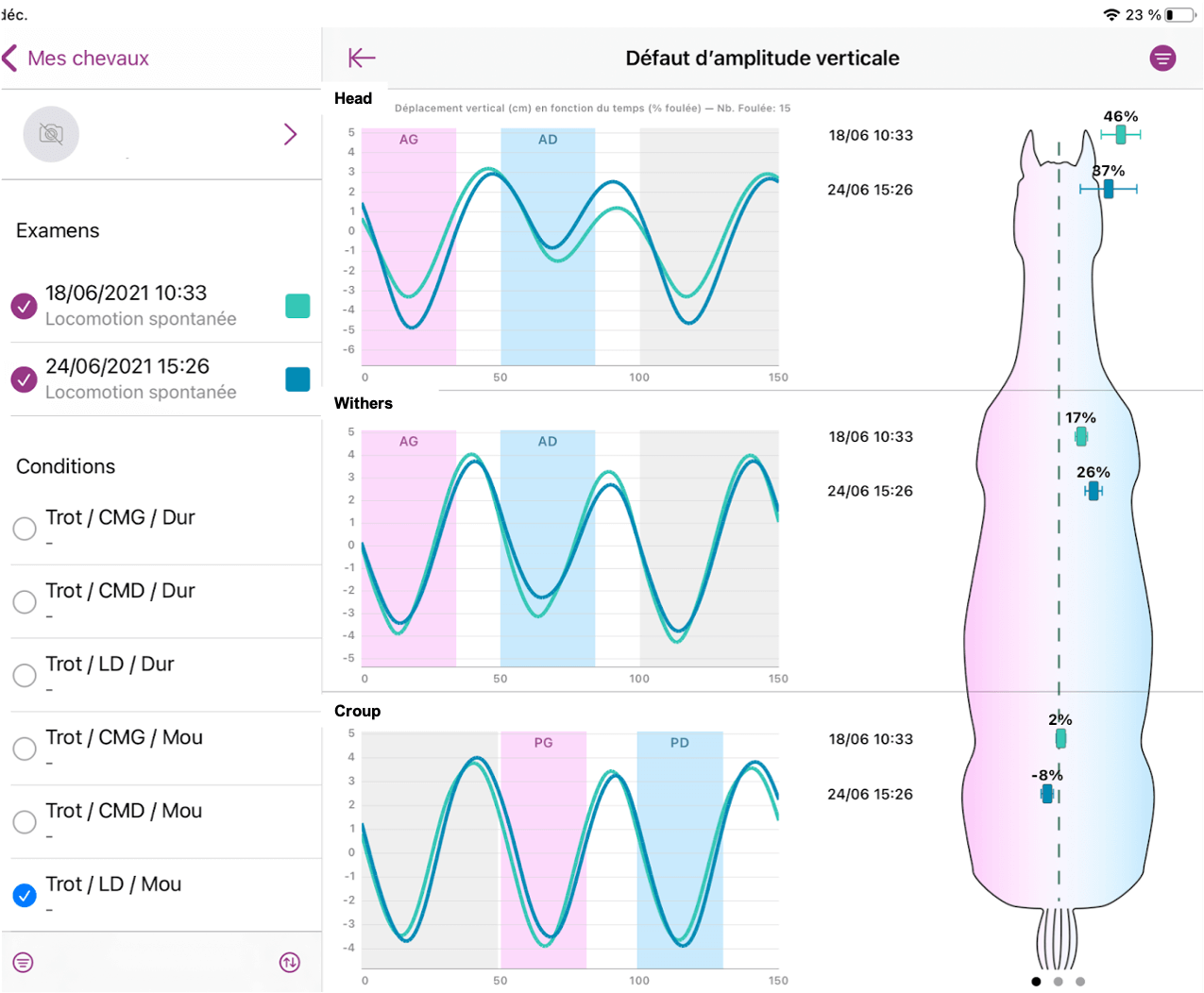In the last few years, technological innovations in the health sector have increased. They are committed to improving medical practice, research, or patient monitoring and provide significant opportunities. These technological advances have recently been introduced into the world of equine health, with the aim of optimizing equine performance and well-being. Locomotion quantification tools have emerged, allowing veterinarians to obtain accurate and objective data.
Discover the six reasons why using a locomotion quantification tool adds real value to the daily work of an equine veterinarian.
1. Identify and quantify locomotor asymmetries
By measuring the locomotion data, the quantification tool allows optimization of the veterinary diagnosis. With this tool, the veterinarian can quantify and objectify the asymmetry and therefore grade the lameness. The influence and effect of specific conditions during the examination, such as the flexion test or diagnostic anesthesia, can also be measured and objectively assessed.
An example of the objectification of the effect of diagnostic anesthesia is shown below. The veterinarian performed a medial femoral-tibial intra-articular anesthesia of the right hindlimb of this horse. The green curve represents the horse’s asymmetry before anesthesia, and the blue curve illustrates the horse’s movement after anesthesia. The percentage indices are objective indicators of anesthesia’s effect, demonstrating here its positivity.

This tool can also help detect multiple lesions or locomotion adaptations. Indeed, in the example below, the horse has lameness in his left hindlimb but compensates with his right forelimb. This appears visually as a significant RF asymmetry, but it is actually an LH abnormality.

At the end of the examination, the veterinarian can use several features to establish his report, such as a comparison of different conditions or examinations. Finally, by supplementing the veterinarian’s expertise, this system enables an informed diagnosis, helping to specify the treatment to be implemented in order to maximize its efficiency.
2. Support pre-purchase visits diagnosis
The veterinarian can analyze objective data by collecting and comparing multiple parameters such as the asymmetry index in straight line or in circle, the elevation amplitude of the head, withers, and croup movements. The visual below compares two conditions performed during the same examination: straight trot on hard ground (green) and on soft ground (blue). On this horse, we can see that a hard ground accentuates the asymmetry of the right forelimb (+14%) while a soft ground accentuates the asymmetry of the left hindlimb (+3%).

During a pre-purchase visit, these features provide several advantages:
– Assist in identifying “suspicious” areas to focus on during the x-ray examination.
– Identify anomalies that may have long-term consequences. More specifically, if a horse suffers from a lesion that causes pain in one of its limbs, it will compensate by overusing other muscle groups, usually on the healthy limb side. This compensation will not always be visible during the pre-purchase visit and to the naked eye, and the short or medium-term impact could have repercussions on the horse’s physical health.
The objective of the veterinarians during a pre-purchase visit is to give optimal information to the buyer regarding the horse’s current health situation, but also to inform the buyer about potential risks. As a result, the locomotion quantification tool is a valuable resource for veterinarians, allowing them to strengthen the buyer’s confidence in this delicate acquisition process.
3. Optimize rehabilitation and prevent injuries
After a thorough examination of the horse’s physical and mechanical health, the locomotion quantification tool will be a valuable asset in the horse’s career management. The information gathered during the examination will allow the veterinarian to make recommendations regarding the horse’s work and daily needs, optimizing its overall performance while ensuring its physical integrity.
As a result, the veterinarian can advise the owner by recommending the most suitable exercises for his locomotor profile. For example, with treatment prescriptions, tailored nutritional supplements, or even a personalized orthopedic shoe. Another key point is that such a tool makes it possible to measure the effectiveness of treatment and therefore to adapt the veterinary protocol for each horse at any time. Longer-term, the veterinarian can perform longitudinal monitoring of the horses to anticipate the development of lesions by detecting locomotor abnormalities when comparing examinations.
Below, the locomotion of the examined horse has slightly degraded between the 18/06 and the 24/06 examination, with +9% asymmetry on the right forelimb and +10% asymmetry on the left hindlimb.

4. Classify and archive data
Aside from the immediate benefit provided during locomotive exams, these technologies can be used to set up long-term monitoring. The veterinarian will be able to access the data history of each horse at any time by archiving exams and pre-purchase visits. Its use allows to compare, at a given moment, the data of an exam to the previous examinations, stored and archived. This functionality can also serve as a “guarantee” by adding security to the results of examinations or pre-purchase visits. The archived data can also be used in case of conflict.
5. Develop your business and improve customer satisfaction
The survey “Quantitative gait analysis in equine clinical practice – A.M. Hardeman et al 2021” which investigated equine veterinarians’ perceptions and experiences with the daily use of a quantification tool, yielded some interesting data:
– In terms of the utility of quantitative equine locomotion analysis, 82.5 % of user veterinarians have a positive or very positive opinion of it. 62.6% of non-users think it is useful.
– About the customers’ perception concerning the use of this type of tool: 80% of client veterinarians have a positive or very positive perception of its use. Clients of non-user veterinarians rate them as positive or very positive 62.6% of the time.
According to the survey results, veterinarians who purchased a system were motivated by improved objectivity, better customer service, transparency, and documentation. These results show that veterinarians who use these systems see them as a necessary and integral part of their daily routine. The advantages for a veterinary activity are indeed numerous: reassure and develop customer loyalty, optimize time and organization, increase turnover, access new markets,…
6. Research & Development
More than a user, the veterinarian has an essential role to play in the development of these technologies. The use of a locomotion quantification tool allows to perform a very precise work, quite close to what is currently used in human medicine. Using an easy-to-use tool, veterinarians and researchers can collect, classify, and archive a large amount of data, allowing the development of knowledge and skills in equine locomotion.
The data gathered can be analyzed, correlated, shared, and used as the foundation for research projects such as measuring the effectiveness of current and future treatments. The findings of this study, as reliable sources of documentation, can be used by veterinarians to benefit the horse, its athletic performance, and its balance.
In this way, the locomotion quantification tools also have a pedagogical vocation. The aim here is to train collaborators as well as future veterinarians by easily sending reports and practical cases anywhere in the world.
CONCLUSION
In conclusion, using a locomotion quantification tool has numerous advantages. This tool, when combined with veterinarian expertise, is a true objective solution for veterinary diagnosis and prevention of future injuries. The data collected is an added value for the monitoring, management and therefore the health and well-being of the athletic horse. The investment returns obtained by the use of this technology are numerous and can be applied to diagnosis, prevention, performance and research.
Keywords: quantification tool, locomotor asymmetries, lameness, equine veterinarians, diagnosis


